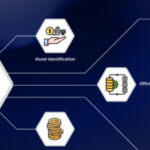About THORSwap Airdrop
THORSwap Airdrop is a decentralised cross-chain liquidity protocol based on Tendermint & Cosmos-SDK and utilising Threshold Signature Schemes (TSS). It does not peg or wrap assets, it simply determines how to move them in response to user-actions.
THORChain observes incoming user deposits to vaults, executes business logic (swap, add/remove liquidity), and processes outbound transactions. THORChain is primarily a leaderless vault manager, ensuring that every stage of the process is byzantine-fault-tolerant.
THORSwap Airdrop key objective is to be resistant to centralisation and capture whilst facilitating cross-chain liquidity. THORChain only secures the assets in its vaults, and has economic guarantees that those assets are safe.
| Platform | Total Value | Max. Participants | Website |
|---|---|---|---|
| RUNE | 5% of the total supply | Unlimited | Click Here To Visit |
How It Works
Emission Schedule
Describes the Emission Schedule from the Reserve to Nodes and Liquidity providers.
Incentive Pendulum
THORSwap Airdrop Incentive Pendulum keeps the network in a balanced state. It stops the network from becoming unsafe or ineff…
Fees
THORChain charges a fixed Outbound Fee and a dynamic Liquidity Fee.
Prices
Decentralised exchanges need accurate prices for users to swap between assets.
Governance
THORChain governance is deliberately minimal. It decides which chains and assets are listed, and when the protocol gets …
THORChain Name Service
How THORNames work
RUNE
RUNE is the asset which powers the THORChain ecosystem and provides the economic incentives required to secure the network. RUNE has four key roles which are described below.
- Liquidity (as a settlement asset)
- Security (as a sybil-resistant mechanism, and a means for driving economic behaviour)
- Governance (signalling priority on-chain)
- Incentives (paying out rewards, charging fees, subsidising gas)
THORNodes
THORSwap Airdrop service the THORChain network, of which there is intended to be initially 100, but can scale to 300. The design goal of THORChain is such that anyone can join the network with the required funds (permissionless) *and be anonymous*, yet still be secure. THORChain takes this a step further by having a VERY high churn schedule, kicking out nodes continuously.
This high-churn network ensures that it is censorship-resistant, evades capture and resists centralisation. Each THORNode is comprised of several independent servers in a cluster, which run full-nodes for each connected chain, a THORDaemon and a Midgard API. THORNodes should be anonymous, do not support delegation and are regularly churned out.
Liquidity Model
How THORChain facilitates continuous, incentivised liquidity, with IL Protection. Instead of limit-order books, THORChain uses continuous liquidity pools (CLP). The CLP is arguably one of the most important features of THORChain, with the following benefits:
- Provides “always-on” liquidity to all assets in its system.
- Allows users to trade assets at transparent, fair prices, without relying on centralised third-parties.
- Functions as source of trustless on-chain price feeds for internal and external use.
- Democratises arbitrage opportunities.
- Allows pools prices to converge to true market prices, since the fee asymptotes to zero.
- Collects fee revenue for liquidity providers in a fair way.
- Responds to fluctuating demands of liquidity.
Governance
THORSwap Airdrop governance is deliberately minimal. It decides which chains and assets are listed, and when the protocol gets upgraded. THORChain aims to have as little governance baked into the system as possible. This is done so that nodes don’t communicate or learn who one another are. This is important for security because it makes sure that nodes don’t act together to take control.
THORChain governance decides:
- which assets are listed/delisted
- which chains are listed/delisted
- when the protocol gets upgraded
- the economic limit – how many nodes can participate








